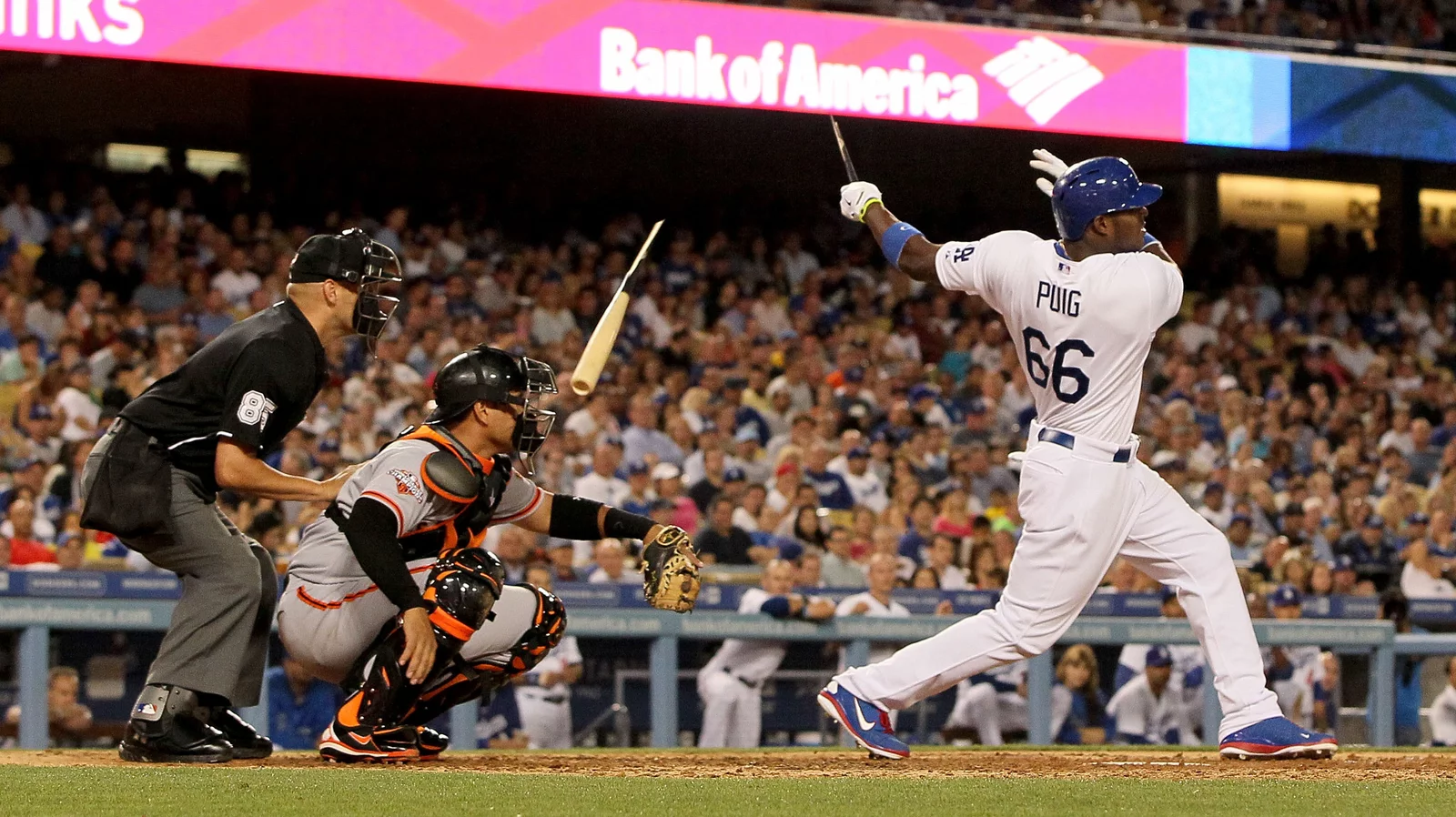For any baseball player, their bat is an extension of power and precision at the plate. A trusty bat, perfectly balanced and broken in, allows you to unleash powerful hits with confidence. But even the most cherished bat can't last forever. Holding onto a worn-out model can hinder your performance and even lead to safety concerns.
Here's why knowing when to replace your bat is crucial:
Your bat has splinters, cracks, or dents
Cracks, dents, and other physical damage are not just cosmetic concerns—they compromise the bat's structural integrity and can be dangerous. Composite wooden bats typically develop cracks, while aluminum bats dent. Regardless of the material, any visible damage is a red flag. A cracked bat can shatter on contact with the ball, potentially causing injury to yourself or others on the field. Stop using a cracked bat immediately. Even a small crack can significantly weaken the bat and lead to breakage on the next swing.
Expert Tip: To help prevent damage, keep the bat out of extreme temperatures. Excessive heat or cold can warp or degrade the materials in the bat, weakening it for gameplay. Examine the crack closely. If it's a minor surface crack, the bat might be salvageable for use in batting practice, but only if you're an adult making that decision. However, any major cracks running through the wood or delamination (separation of layers) in a composite bat means it's definitely time to retire it.
Your bat leaves you with excessive hand shock or stings
A well-balanced bat feels comfortable and provides feedback on contact. If you experience excessive hand shock or vibrations after hitting the ball, it's a sign the bat isn't transferring energy efficiently. Additionally, sharp stings can indicate a mismatch between your bat weight and swing mechanics, or potentially a damaged bat.
Expert Tip: Rotating your bat periodically during gameplay can help spread hits across the barrel, keeping one specific spot from taking more damage than others and increasing the bat's longevity.
You hear or feel a loss of "pop" in your bat
Remember the satisfying "ping" you used to get with solid contact? If your bat sounds dull or feels like it absorbs the impact rather than transferring energy to the ball, it's likely lost its pop. This is a clear indicator that the bat material has degraded and needs replacing. Wooden bats tend to lose pop faster than composite bats, typically lasting only a season or less depending on usage. Composite bats can last several seasons (1-3 years) before losing pop significantly.
Expert Tip: To help keep your bat in good shape, avoid using it in batting cages. Batting cages typically use pitching machines that throw balls at a consistent speed and location. This can lead to overuse of a specific "sweet spot" on the bat, concentrating stress on that area. Batting cages also focus on getting reps in. Mishitting balls puts undue stress on the bat, regardless of location, and can accelerate wear and tear.
Your bat doesn’t meet league regulations
Leagues often have specific bat performance standards (BBCOR, USSSA, etc.). These standards ensure fair play and prevent the use of bats that give an unfair advantage. Make sure your bat still meets the current league regulations to avoid any issues during games. SidelineSwap allows you to filter your search based on league standards, making it easier to find a compliant bat.
Expert Tip: Some leagues have restrictions on bat length or drop weight (for BBCOR bats) depending on the age group. Choose a bat with the right weight and length for your age and size. A lighter bat will be easier to swing for younger players, while older players might prefer a bat with more weight for power.
Ready for an upgrade? Check out all the new and used bats on SidelineSwap.

